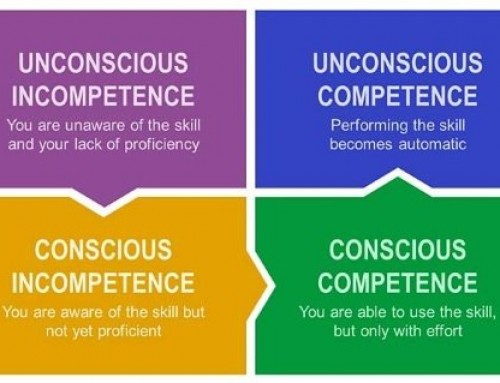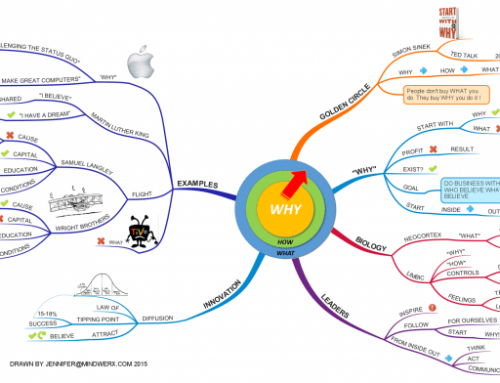Leadership strategies to lead for innovation
And what approach do the people you lead need?
A while ago I was talking to one of my clients, a young and dynamic leader of innovation in her organisation, and she was telling me how much she loved her job. She loved it because it challenged her and allowed her to learn and try new things every day. And she got to collaborate with some wonderful people.
She credited her passion to her Director, whom she described as an inspirational visionary that painted a picture of where the organisation was heading and personally lived the organization’s values. It was exciting to hear her talk about what they were doing, and even more exciting for me because I was doing a variety of things with them. It’s great working with talented, motivated and inspiring people.
But she also lamented that some of her colleagues did not seem to appreciate the new Director’s style. Many seemed to want a lot more guidance and instruction from her, with a few even leaving because they felt they no longer knew what she expected of them. It was a story I’d heard several times, and even came across in my early career.
As we talked, I reflected on my own experience with leadership, and the three broad types of leaders I had encountered – what I describe as GPS, Map or Compass Leadership.
The GPS Leader is like you car’s GPS, it shows you exactly where to go, and even tells you exactly what to do – turn left in 200 meters, stay right, third exit on the round-about, etc. The GPS even tells you what’s coming up, left turn ahead then take the motorway, and now most even warn of fixed speed and red light cameras, so you don’t get into trouble.
New managers who have been promoted from supervisor roles may lead like this today, actively involved in every task, every decision and often feel they must ‘micro-manage’ all aspects of their function to ensure their goals are met. And of course there are some long-time managers doing the same.
The Map Leader is similar to when you use an old-style map to navigate a cross country family vacation. You take an overall look at the map, plot distances to travel each day, determine what sites to stop at, maybe where to have lunch, and of course where to stay each night.
Most of today’s managers, particularly senior managers, are like this. They provide their people with a detailed description of what is to be done – things like business plans, job descriptions, KPIs, budgets, etc., and then let them get about their work following the map. This is a typical management approach in most organisations, and is usually checked with regular performance reviews and audits to be sure everyone is on track.
The Compass Leader is very different to the GPS or Map Leaders. Knowing what they are trying to reach, explorers use a compass to determine which direction to travel in. Aided by the natural environment around them, and the Sun and stars above, they take into account their team’s strengths, and barriers and possible pathways they come across, to make their way to where they are heading.
Similarly a Compass leader paints a picture of where the organisation needs to be to achieve its purpose and mission, provides some core values for people to live by, and then let’s then find their way ahead. And this type of leader is usually right there working with the team to deliver on the organisation’s purpose.
I had a leader like this in my early career as a executive with 9 managers and 180 staff reporting to me. My CEO was also my mentor, and at any one time he only ever had three key strategies or goals for our executive team to focus on.
They were big things of course, very high level strategies aimed at delivering on the purpose and goals of our business. But it was all we needed to know what direction to go in, and we used our own compasses to find the way ahead. Sure sometimes we got off track or a little lost, and if we didn’t realize that ourselves and self-correct, our Compass Leader nudged us back in the right direction.
For me it was a fabulous environment, working ‘with’ my CEO and mentor, rather than ‘for’ him. And it allowed me and my team to figure things out, creatively solve problems, and take some chances to find the way forward. Collaboration was key and creativity was the name of the game, with innovation happening all the time in the way we did business.
But just like my young client, I saw around me people that wanted to be guided more closely, and some who wanted to be told exactly what to do. They needed the map or the GPS to feel comfortable, and inevitably working with a Compass Leader unsettled a few.
It was also interesting to reflect that when my Compass Leader was promoted to another business unit, the new CEO I got was much closer to a GPS Leader, who wanted his people to work ‘for’ him. I lasted about 3 months with him, before I rejoined my old CEO on the executive team of his new 18,000 person business.
So the question you might ask yourself is, what type of leader are you? And is it the most useful approach for your situation?
There is nothing wrong with any of these leader types, each of them may have a place in a team environment. Indeed it is almost certain that at different times you will be called on to switch leadership types, to adapt to a new team or project.
I know that each time I took on a new leadership position I had to stay close to my team until I understood their talents, motivations, and key strengths and possible weaknesses. And when needed I would move people around to fit them in where they could be challenged and excel. But once I had my team moving in the right direction, under their own guidance, I would step back and start looking for the next opportunity for me to tackle.
An even more important question than what type of leader are you might be – what type of leader do your people need or prefer? Imagine if you are a GPS Leader and your staff prefer a Map or Compass Leader. Or imagine you are a Compass Leader and your people want to be told every step – or have gotten use to that style because your predecessor was a GPS Leader.
A mismatch between leadership and followership styles is one of the biggest reasons I see organisations and teams miss opportunities, fail to achieve their goals, suffer staff turnover, and experience excessive waste.
What might you do about it, if that’s your situation?








Leave A Comment
You must be logged in to post a comment.